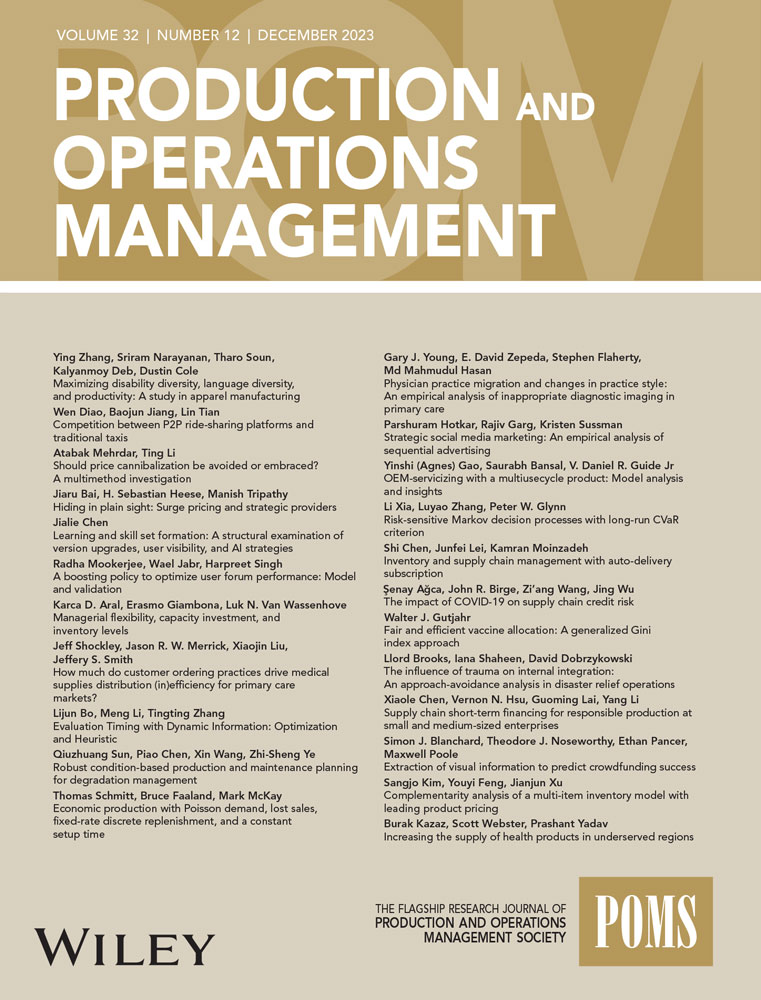A machine learning approach to deal with ambiguity in the humanitarian decision making
IF 5.1
3区 管理学
Q1 ENGINEERING, MANUFACTURING
引用次数: 0
Abstract
. One of the major challenges for humanitarian organizations when planning relief efforts is dealing with the inherent ambiguity and uncertainty in disaster situations. The available information that comes from different sources in post-disaster settings may involve missing element sand inconsistencies, which can severely hamper effective humanitarian decision making. In this paper, we propose a new methodological framework based on graph clustering and stochastic optimization to support humanitarian decision makers in analyzing the implications of divergent estimates from multiple data sources on final decisions and efficiently integrating these estimates into decision making. We illustrate the proposed approach on a case study that focuses on locating shelters to serve internally displaced people in a conflict setting, specifically, the Syrian civil war. We use the needs assessment data from two different reliable sources to estimate the shelter needs in Idleb, a district of Syria. The analysis of data provided by two assessment sources has indicated a high degree of ambiguity due to inconsistent estimates. We apply the proposed methodology to integrate divergent estimates into the decision making for determining shelter locations in the district. The results highlight that our methodology leads to higher satisfaction of demand for shelters than other approaches such as a classical stochastic programming model. Moreover, we show that our solution integrates information coming from both sources more efficiently thereby hedging against the ambiguity more effectively.一种处理人道主义决策模糊性的机器学习方法
. 人道主义组织在规划救济工作时面临的主要挑战之一是处理灾害情况中固有的模糊性和不确定性。灾后环境中来自不同来源的现有信息可能存在要素缺失和不一致的情况,这可能严重妨碍有效的人道主义决策。在本文中,我们提出了一个基于图聚类和随机优化的新方法框架,以支持人道主义决策者分析来自多个数据源的不同估计对最终决策的影响,并有效地将这些估计整合到决策中。我们在一个案例研究中说明了所提出的方法,该案例研究的重点是在冲突环境中为国内流离失所者寻找避难所,特别是叙利亚内战。我们使用来自两个不同可靠来源的需求评估数据来估计叙利亚伊德利卜地区的住房需求。对两个评估来源提供的数据的分析表明,由于估计不一致,存在高度的不确定性。我们应用所提出的方法,将不同的估计整合到决策中,以确定该地区的避难所位置。结果表明,我们的方法比其他方法(如经典的随机规划模型)更能满足对住房的需求。此外,我们表明我们的解决方案更有效地集成了来自两个来源的信息,从而更有效地对冲了模糊性。
本文章由计算机程序翻译,如有差异,请以英文原文为准。
求助全文
约1分钟内获得全文
求助全文
来源期刊

Production and Operations Management
管理科学-工程:制造
CiteScore
7.50
自引率
16.00%
发文量
278
审稿时长
24 months
期刊介绍:
The mission of Production and Operations Management is to serve as the flagship research journal in operations management in manufacturing and services. The journal publishes scientific research into the problems, interest, and concerns of managers who manage product and process design, operations, and supply chains. It covers all topics in product and process design, operations, and supply chain management and welcomes papers using any research paradigm.
 求助内容:
求助内容: 应助结果提醒方式:
应助结果提醒方式:


